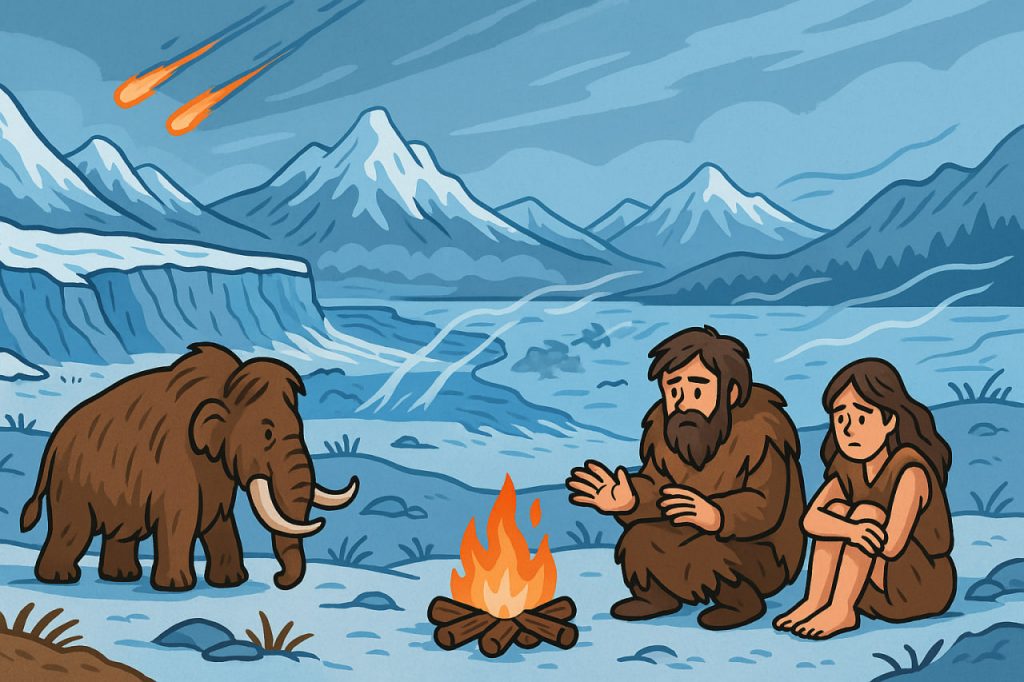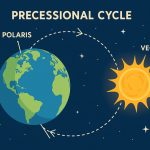About 12,900 years ago, just as the Earth was warming after the last Ice Age, the planet experienced a shocking climatic reversal. Temperatures suddenly plunged, glaciers advanced once again, and regions that had begun to thaw were thrown back into cold, dry conditions. This mysterious time, lasting roughly 1,200 years, is known as the Younger Dryas period — a critical episode that reshaped ecosystems, species, and even the course of human civilization.
A Sudden Freeze After the Warming
Before the Younger Dryas began, the Earth had been gradually warming from the last Pleistocene glaciation. Ice sheets were melting, rivers were flowing freely, and plants and animals were recolonizing newly thawed lands. Then, within a few decades — possibly even years — the trend reversed dramatically.
In Greenland’s ice cores, scientists discovered that average temperatures dropped by as much as 10°C (18°F) in less than a century. The Northern Hemisphere, particularly North America and Europe, faced glacial conditions once more.
What Caused the Younger Dryas?
The exact cause remains one of the most fascinating mysteries in paleoclimatology. Scientists have proposed several leading hypotheses:
- Meltwater Disruption of Ocean Currents
The most widely accepted explanation involves the collapse of ice-dammed lakes in North America, such as Glacial Lake Agassiz. When these lakes burst, trillions of gallons of cold freshwater poured into the North Atlantic Ocean, disrupting the AMOC (Atlantic Meridional Overturning Circulation).
This weakened ocean circulation prevented warm water from reaching northern latitudes, leading to a dramatic cooling event. - Comet or Meteor Impact Hypothesis
Some scientists suggest that a fragmented comet or asteroid struck Earth around 12,900 years ago, igniting widespread wildfires and injecting dust into the atmosphere. Evidence supporting this includes nanodiamonds, iridium, and microscopic glass spheres found in geological layers from that period — materials typically created under extreme heat. - Volcanic and Atmospheric Feedbacks
A third possibility is that volcanic activity, combined with feedback loops from melting permafrost, altered atmospheric circulation. These changes could have amplified natural cooling cycles triggered by orbital shifts.
Effects on Climate and Ecosystems
The Younger Dryas dramatically reshaped global weather systems:
- Europe plunged into a deep freeze, with tundra vegetation replacing forests.
- North America saw the return of permafrost and declining rainfall.
- Asia and Africa experienced changes in monsoon patterns and desert expansion.
In contrast, the Southern Hemisphere was less affected, demonstrating that the event was largely Northern Hemisphere–driven.
The climate instability led to mass migrations of animal species and placed enormous stress on early human populations. Many megafauna species — like mammoths, mastodons, and giant sloths — vanished during this time.
Impact on Early Human Civilizations
The Younger Dryas had a profound effect on humanity’s development. In the Fertile Crescent (modern-day Middle East), for example, the sudden cooling may have forced people to shift from nomadic lifestyles to early agriculture to survive food shortages.
This environmental pressure possibly contributed to the Neolithic Revolution, marking the birth of farming and permanent settlements.
Archaeological sites like Göbekli Tepe in Turkey and Jericho in Palestine date to the end of the Younger Dryas, suggesting that climate stress may have inspired cultural and technological innovation.
The End of the Younger Dryas
Around 11,700 years ago, temperatures rose sharply again — this time permanently — marking the beginning of the Holocene epoch, the warm and relatively stable period that continues today.
Within a century, glaciers retreated, sea levels rose, and Earth entered the climate conditions that allowed civilizations to flourish.
Lessons from the Younger Dryas
The event is a powerful reminder that Earth’s climate system can change suddenly and dramatically. Modern scientists study it to understand how small disturbances — such as melting ice or freshwater influx — can destabilize larger systems like ocean currents or atmospheric circulation.
As current global warming accelerates, researchers warn that disrupting ocean currents again could produce abrupt, unforeseen changes — echoing the Younger Dryas on a modern scale.
P.S. More and more scientists are now talking about the cyclical nature of climate change, which may be related to the Earth’s precession. You can read about it in the following articles
Interesting Facts
- The name “Younger Dryas” comes from Dryas octopetala, an Arctic flower whose pollen is found in sediments from this period.
- Ice core data show the cooling began and ended within mere decades, proving the climate can shift faster than once thought.
- During this period, the Greenland Ice Sheet expanded by hundreds of kilometers.
- Atmospheric carbon dioxide levels briefly stalled during the Younger Dryas, slowing global warming.
- Some Indigenous legends around the world describe “years without summer,” possibly echoing this ancient freeze.
Glossary
- Younger Dryas — a sudden cold period from about 12,900 to 11,700 years ago following the last Ice Age.
- Glacial Lake Agassiz — a massive meltwater lake that may have triggered ocean circulation collapse.
- AMOC — the Atlantic current system that distributes heat between the hemispheres.
- Holocene — the warm, stable geological epoch following the Younger Dryas.
- Megafauna — large prehistoric animals that often went extinct during rapid climate shifts.


